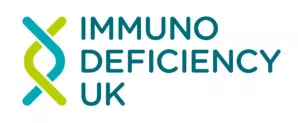Summary
This information explains the rare immune condition called X-linked inhibitor of apoptosis protein (XIAP) deficiency.
The content has been produced jointly between Immunodeficiency UK, Great Ormond Street Hospital (GOSH) and the Great North Children’s Hospital and in association with the XLP Research Trust.
What causes XIAP deficiency?
XIAP deficiency is caused by a mutation (change) in the XIAP gene that reduces its protein function. Normally, the XIAP protein does an important job in regulating the body’s immune response but, if the XIAP protein does not work, excessive inflammation and damage can occur.
XIAP deficiency is an example of an X-linked disorder, which means that it almost exclusively affects males. This is because the XIAP gene is on the X chromosome. Females have two X chromosomes, so a problem in one copy of the XIAP gene can be compensated for by the second copy. Such females are healthy carriers of XIAP deficiency. As boys have only one X chromosome, there is no second X chromosome to compensate if they inherit the abnormal copy of the XIAP gene, resulting in disease.
Sometimes the change can also occur as a ‘new mutation’ that has developed ‘out of the blue’ or sporadically, in which case there is no previous family history. More information about genetics is available in our booklet ‘Genetic aspects of primary immunodeficiency’
- recurrent fevers, a rash and low blood count (haemophagocytic lymphohistiocytosis (HLH*), often triggered by the glandular fever virus (Epstein-Barr virus; EBV)
- an enlarged spleen (splenomegaly)
- inflammatory bowel disease, with symptoms of abdominal pain and diarrhoea, sometimes containing blood.
HLH is a serious condition where the body reacts inappropriately to a ‘trigger’.
Certain white blood cells (T-cells and macrophages) become over-activated and can cause severe inflammation and damage to tissues. Please refer to our information on HLH.
Other features in XIAP deficiency can include hypogammaglobulinaemia (low immunoglobulin level) and inflammation in other tissues, such as the joints (arthritis).
A key step is your specialist recognising the clinical pattern as possibly being due to XIAP deficiency. A wide range of blood tests will be carried out, including a full blood count to look for low numbers of each type of blood cell, as well as more specialised tests to check liver function and look for signs and causes of infection. Some tests will need to be performed in a specialist laboratory and will take several days. The diagnosis of XIAP deficiency is confirmed by measuring a low level of XIAP protein in blood cells, as well as genetic tests to identify the underlying genetic change.
Other samples, such as bone marrow or lymph node tissue, may be needed depending on the patient’s condition. If there are neurological symptoms, a sample of cerebrospinal fluid may be taken by lumbar puncture. Inflammation of the gut may need to be assessed by looking inside with a flexible endoscope (while the child is asleep under anaesthetic), and many children will need specialised imaging using techniques such as ultrasound, MRI or CT scan. Your medical team will guide you through this process.
Diagnosis and treatment are usually coordinated by a specialist centre experienced in treating rare immune disorders. The initial aim is to dampen down (suppress) inflammation, when present. This may involve courses of corticosteroids, biologics (targeted antibody treatment) and other therapy, often given in hospital. If children need intensive therapy and monitoring, a semi-permanent line is often placed into a large vein in the neck, under anaesthetic, so that needles are no longer needed.
Inflammatory bowel disease will generally be treated with standard immuno-suppressant medicines, although symptoms do not always respond well. If there is evidence of infection, anti-EBV, antibiotics and other anti-infection medicines will be prescribed, and immunoglobulin replacement therapy is often needed.
Currently, haematopoietic stem cell transplant (HSCT) is the only curative treatment for XIAP deficiency. This is where a child’s bone marrow is replaced with stem cells from a healthy donor. However, HSCT in the context of XIAP deficiency has variable outcomes and the condition itself also varies markedly in severity. Therefore, the decision about whether to proceed with a transplant or not needs to be individualised, in discussions between the family and an experienced specialist team.
Genetic counselling for the family is important and will be offered by the specialist centre. Prenatal diagnosis is available for future pregnancies if desired and provided that the underlying genetic change can be identified. You can find out more information about genetic testing in our leaflet ‘Genetic aspects of primary immunodeficiency’.
Other support groups
The XLP Research Trust offers specific support and advice to families affected by XIAP deficiency and promotes and funds research into the condition. Their website (www.xlpresearchtrust.org) includes lots more information and patient stories. Contact them on 01794 521077 or email info@xlpresearchtrust.org.
The charity Histio UK offers support and advice to families affected by all types of histiocytosis. Call them on 07850 740241 or visit their website at https://www.histiouk.org/.
The leaflet ‘How to become a bone marrow donor’ can be obtained from the Anthony Nolan Bone Marrow Trust by ringing 0303 3030303 or visiting their website at www.anthonynolan.org
You can download our information booklet here.





